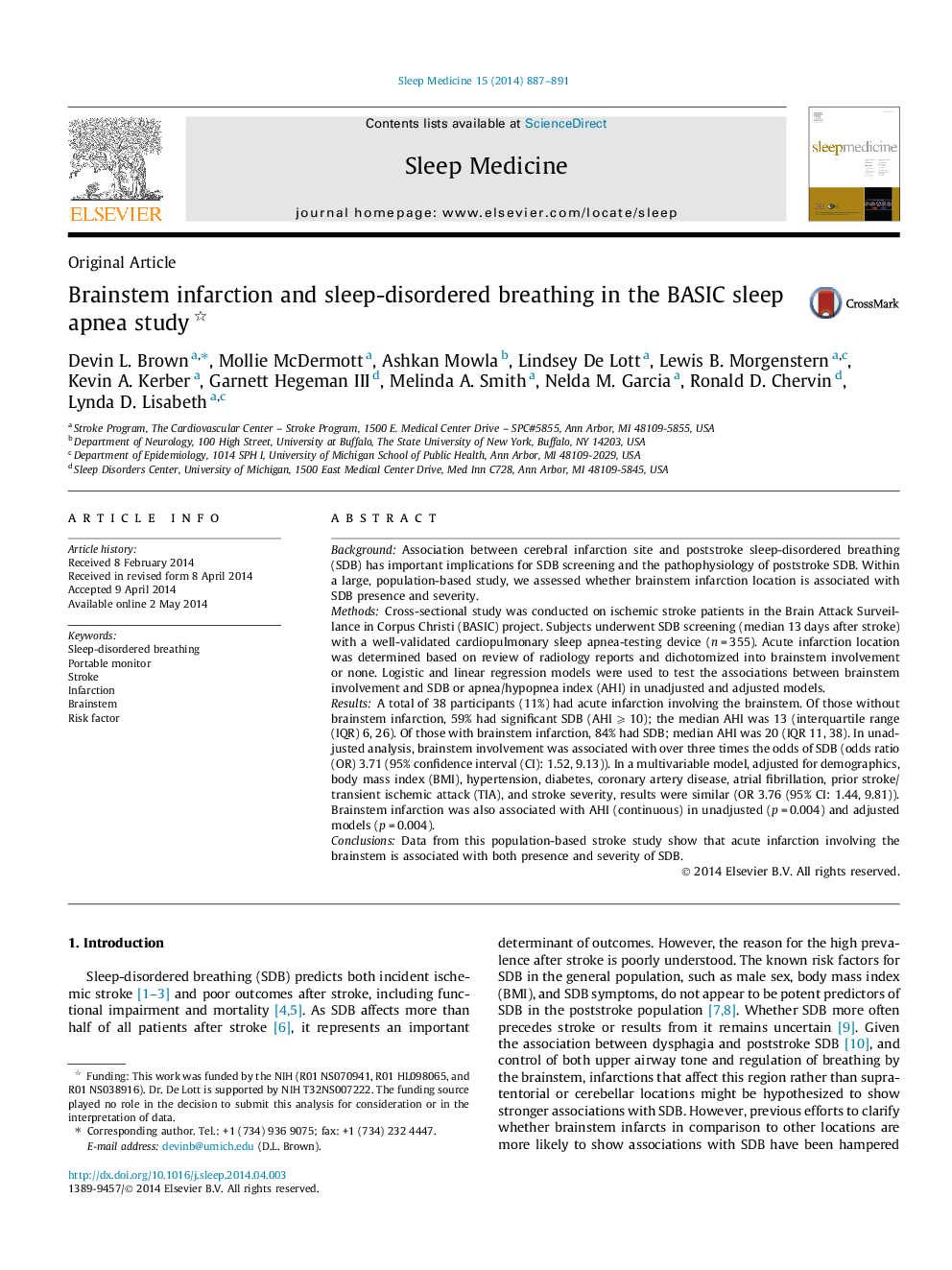| کد مقاله | کد نشریه | سال انتشار | مقاله انگلیسی | نسخه تمام متن |
|---|---|---|---|---|
| 3176086 | 1200245 | 2014 | 5 صفحه PDF | دانلود رایگان |

• Sleep-disordered breathing (SDB) after ischemic stroke is very common.
• Reasons for this high prevalence are poorly understood.
• We compared SDB in patients with recent stroke in a population-based study.
• Patients with brainstem infarction had a higher prevalence and severity of SDB.
• The associations persisted with adjustment for potential confounders.
BackgroundAssociation between cerebral infarction site and poststroke sleep-disordered breathing (SDB) has important implications for SDB screening and the pathophysiology of poststroke SDB. Within a large, population-based study, we assessed whether brainstem infarction location is associated with SDB presence and severity.MethodsCross-sectional study was conducted on ischemic stroke patients in the Brain Attack Surveillance in Corpus Christi (BASIC) project. Subjects underwent SDB screening (median 13 days after stroke) with a well-validated cardiopulmonary sleep apnea-testing device (n = 355). Acute infarction location was determined based on review of radiology reports and dichotomized into brainstem involvement or none. Logistic and linear regression models were used to test the associations between brainstem involvement and SDB or apnea/hypopnea index (AHI) in unadjusted and adjusted models.ResultsA total of 38 participants (11%) had acute infarction involving the brainstem. Of those without brainstem infarction, 59% had significant SDB (AHI ⩾ 10); the median AHI was 13 (interquartile range (IQR) 6, 26). Of those with brainstem infarction, 84% had SDB; median AHI was 20 (IQR 11, 38). In unadjusted analysis, brainstem involvement was associated with over three times the odds of SDB (odds ratio (OR) 3.71 (95% confidence interval (CI): 1.52, 9.13)). In a multivariable model, adjusted for demographics, body mass index (BMI), hypertension, diabetes, coronary artery disease, atrial fibrillation, prior stroke/transient ischemic attack (TIA), and stroke severity, results were similar (OR 3.76 (95% CI: 1.44, 9.81)). Brainstem infarction was also associated with AHI (continuous) in unadjusted (p = 0.004) and adjusted models (p = 0.004).ConclusionsData from this population-based stroke study show that acute infarction involving the brainstem is associated with both presence and severity of SDB.
Journal: Sleep Medicine - Volume 15, Issue 8, August 2014, Pages 887–891